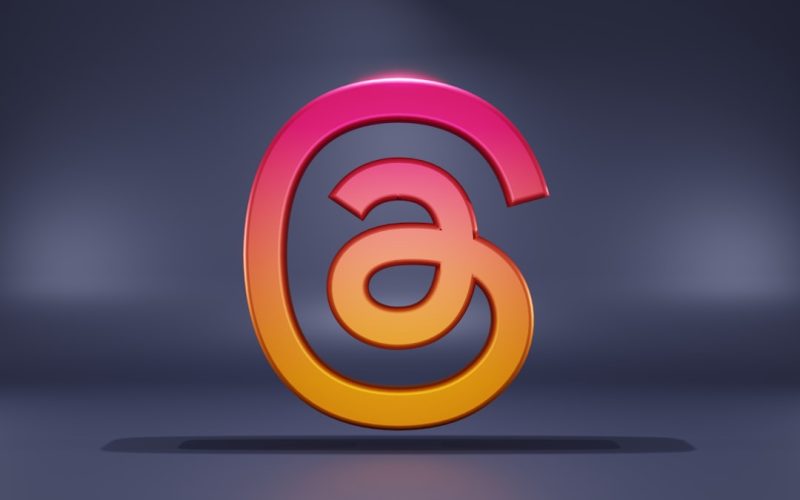To create effective advertising campaigns, I must first take the time to understand my audience. This involves delving into their demographics, interests, and behaviors. By gathering data on who my potential customers are, I can tailor my messaging to resonate with them.
For instance, if I discover that my target audience consists primarily of young professionals aged 25-35, I can adjust my tone and content to align with their lifestyle and preferences.
This understanding allows me to create ads that not only capture attention but also foster a connection with the audience. Moreover, I find it essential to segment my audience based on various criteria such as location, purchasing behavior, and engagement levels.
By doing so, I can create more personalized ads that speak directly to each segment’s unique needs and desires. For example, if I know that a particular segment is interested in eco-friendly products, I can highlight the sustainable aspects of my offerings in my ads. This targeted approach not only increases the likelihood of engagement but also enhances the overall effectiveness of my advertising efforts.
Table of Contents
ToggleKey Takeaways
- Understand your audience’s demographics, interests, and behaviors to tailor your ad content effectively.
- Set clear and measurable goals and objectives for your ad campaign to track its success.
- Choose the right ad format that aligns with your campaign objectives and resonates with your target audience.
- Craft compelling ad copy and visuals that grab attention and drive action from your audience.
- Utilize custom audiences and lookalike audiences to reach and engage with potential customers who are similar to your existing customer base.
Setting Clear Goals and Objectives
Setting Clear Goals and Objectives
Once I have a firm grasp of my audience, the next step is to set clear goals and objectives for my advertising campaign. Without defined goals, it becomes challenging to measure success or determine the effectiveness of my strategies. I often start by asking myself what I want to achieve with my ads.
Defining SMART Objectives
Is it brand awareness, lead generation, or direct sales? By establishing specific, measurable, achievable, relevant, and time-bound (SMART) objectives, I can create a roadmap for my campaign. For instance, if my goal is to increase website traffic by 30% over the next three months, I can develop targeted ads that drive users to my site.
Effective Resource Allocation and Performance Evaluation
Additionally, setting clear objectives allows me to allocate resources effectively and prioritize tasks that align with my overarching goals. It also provides a benchmark against which I can evaluate the performance of my ads, making it easier to identify areas for improvement.
Choosing the Right Ad Format

With my audience understood and goals set, I turn my attention to selecting the right ad format. The choice of format can significantly impact how my message is received and whether it drives the desired action. There are various formats available, including image ads, video ads, carousel ads, and more.
Each format has its strengths and weaknesses, and I must consider which one aligns best with my campaign objectives. For example, if I aim to showcase multiple products or features, a carousel ad might be the ideal choice as it allows me to display several images or videos in a single ad unit. On the other hand, if I want to tell a compelling story or evoke emotions, a video ad could be more effective.
By carefully selecting the ad format that best suits my message and audience preferences, I can enhance engagement and increase the likelihood of conversions.
Crafting Compelling Ad Copy and Visuals
| Metrics | Value |
|---|---|
| Click-Through Rate (CTR) | 8% |
| Conversion Rate | 12% |
| Engagement Rate | 15% |
| Ad Copy Length | 50 characters |
| Visuals Click Rate | 10% |
The next crucial step in my advertising journey is crafting compelling ad copy and visuals. The words I choose and the images I use play a pivotal role in capturing attention and conveying my message effectively. I strive to create headlines that are not only attention-grabbing but also relevant to my audience’s interests.
A strong call-to-action (CTA) is equally important; it should clearly guide viewers on what action they should take next. In addition to copy, visuals are a key component of my ads. High-quality images or videos that align with my brand identity can significantly enhance the overall appeal of my ads.
I often experiment with different visual styles to see what resonates best with my audience. Whether it’s using vibrant colors or minimalist designs, the goal is to create visuals that not only attract attention but also reinforce the message I’m trying to convey.
Utilizing Custom Audiences and Lookalike Audiences
To maximize the effectiveness of my advertising efforts, I leverage custom audiences and lookalike audiences. Custom audiences allow me to target individuals who have already interacted with my brand in some capacity—whether they visited my website, engaged with my social media posts, or subscribed to my newsletter. By reaching out to these individuals, I can nurture existing relationships and encourage them to take further action.
Lookalike audiences take this strategy a step further by enabling me to reach new potential customers who share similar characteristics with my existing audience. By analyzing data from my custom audiences, I can create lookalike audiences that are more likely to be interested in my products or services. This approach not only expands my reach but also increases the chances of attracting high-quality leads who are more likely to convert.
A/B Testing Your Ads

Data-Driven Insights
The power of A/B testing lies in its ability to provide data-driven insights that inform future campaigns. For example, if I run an A/B test comparing two different headlines for the same ad, I can analyze which one generates more clicks or conversions. This information enables me to refine my messaging and optimize future ads for better performance.
Understanding What Works
A/B testing not only helps me understand what works but also encourages a culture of experimentation within my advertising strategy. By continuously testing and refining my ads, I can identify areas for improvement and make data-driven decisions to optimize my campaigns.
Optimizing Future Ads
The insights gained from A/B testing allow me to refine my messaging and optimize future ads for better performance. By applying the knowledge gained from testing, I can create more effective ads that resonate with my target audience, ultimately driving more conversions and revenue.
Monitoring and Analyzing Your Ad Performance
Once my ads are live, monitoring and analyzing their performance becomes paramount. I regularly check key performance indicators (KPIs) such as click-through rates (CTR), conversion rates, and return on ad spend (ROAS). By keeping a close eye on these metrics, I can quickly identify trends and make informed decisions about how to adjust my campaigns.
In addition to quantitative data, qualitative feedback from audience interactions can provide valuable insights as well. Comments on social media posts or responses to surveys can shed light on how my audience perceives my ads. By combining both quantitative and qualitative analysis, I can develop a comprehensive understanding of how well my ads are performing and where improvements may be needed.
Optimizing Your Ad Campaign for Conversions
With performance data in hand, I focus on optimizing my ad campaigns for conversions. This involves making strategic adjustments based on the insights I’ve gathered from monitoring performance. For example, if I notice that certain audience segments are converting at higher rates than others, I may choose to allocate more budget toward those segments while reducing spend on underperforming ones.
Additionally, optimizing landing pages is crucial for maximizing conversions. If users click on my ad but do not complete the desired action on the landing page, it may indicate that there are barriers preventing them from converting. By ensuring that landing pages are user-friendly, visually appealing, and aligned with the ad’s messaging, I can create a seamless experience that encourages users to take action.
Budgeting and Bidding Strategies
Effective budgeting and bidding strategies are essential components of successful advertising campaigns. I must determine how much I’m willing to spend on each campaign while considering factors such as audience size and competition within the market. Setting a realistic budget allows me to allocate resources effectively without overspending.
When it comes to bidding strategies, I often experiment with different approaches such as cost-per-click (CPC) or cost-per-impression (CPM). Each strategy has its advantages depending on campaign goals; for instance, CPC may be more suitable for driving traffic while CPM could be better for brand awareness campaigns. By continuously monitoring performance and adjusting bids accordingly, I can ensure that I’m getting the most value out of my advertising budget.
Adapting to Algorithm Changes and Trends
The digital advertising landscape is constantly evolving due to algorithm changes and emerging trends. To stay ahead of the curve, I must remain adaptable and open to new strategies. Keeping abreast of industry news and updates from platforms like Google and Facebook helps me understand how changes may impact my campaigns.
For example, if a social media platform alters its algorithm in a way that affects organic reach, I may need to adjust my paid advertising strategy accordingly. Staying informed about trends such as increased mobile usage or shifts in consumer behavior allows me to pivot quickly and capitalize on new opportunities as they arise.
Leveraging Retargeting and Remarketing Strategies
Finally, retargeting and remarketing strategies play a crucial role in maximizing the effectiveness of my advertising efforts. These strategies allow me to re-engage users who have previously interacted with my brand but did not convert at that time. By serving targeted ads to these individuals across various platforms, I can remind them of their interest in my products or services.
For instance, if someone visits my website but leaves without making a purchase, retargeting ads can serve as gentle reminders of what they left behind. This approach not only keeps my brand top-of-mind but also increases the likelihood of conversion by providing additional touchpoints along the customer journey. By leveraging retargeting effectively, I can turn potential leads into loyal customers over time.
In conclusion, navigating the world of digital advertising requires a multifaceted approach that encompasses understanding the audience, setting clear goals, choosing appropriate formats, crafting compelling content, utilizing advanced targeting techniques like custom audiences and lookalikes, conducting A/B testing, monitoring performance metrics diligently, optimizing for conversions strategically while managing budgets wisely—all while adapting swiftly to changes in algorithms and trends—and finally leveraging retargeting strategies effectively for maximum impact on conversions!
If you’re looking to enhance your WordPress site before launching a Facebook ad campaign, consider reading the article on how to revamp your website with expert design services. This piece provides valuable insights into optimizing your site’s design and functionality, ensuring it is in top shape to capture the attention of your ad audience.
By improving your website’s user experience and visual appeal, you can increase the effectiveness of your Facebook ad campaign.
For more information, check out the article here.
FAQs
What is a Facebook ad campaign?
A Facebook ad campaign is a targeted advertising strategy that utilizes Facebook’s platform to reach a specific audience with the goal of promoting a product, service, or website.
Why should I run a Facebook ad campaign to promote my WordPress site?
Running a Facebook ad campaign can help increase visibility, drive traffic, and generate leads for your WordPress site. It allows you to target specific demographics and interests, and can be a cost-effective way to reach potential customers.
How do I create a Facebook ad campaign for my WordPress site?
To create a Facebook ad campaign for your WordPress site, you will need to set up a Facebook Ads Manager account, define your campaign objective, target audience, budget, and ad creative. You can then monitor and optimize your campaign performance through the Ads Manager dashboard.
What are some best practices for running a successful Facebook ad campaign for a WordPress site?
Some best practices for running a successful Facebook ad campaign for a WordPress site include defining clear campaign objectives, targeting the right audience, creating compelling ad creative, testing different ad formats, and monitoring and optimizing campaign performance regularly.
How can I measure the success of my Facebook ad campaign for my WordPress site?
You can measure the success of your Facebook ad campaign for your WordPress site by tracking key performance indicators such as reach, engagement, click-through rate, conversion rate, and return on ad spend. Facebook Ads Manager provides detailed analytics and reporting tools to help you measure and analyze campaign performance.




